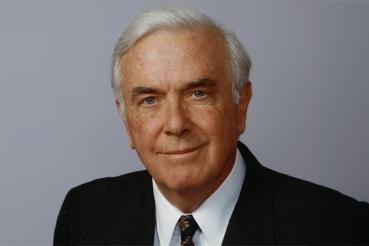We hear a lot about mammograms, colonoscopies and blood pressure checks, but lung cancer screenings — not so much.
Yet compared to those more common exams, lung cancer screening has the greatest chance of saving a life, as it finds over half of lung cancer at an early stage when it is more treatable.
“Lung cancer can be a silent disease,” says Gillian Alex, MD, a thoracic surgeon at RUSH MD Anderson Cancer Center. “And we often see people who have no symptoms at all learn that they have lung cancer when it’s already at an advanced stage.”
Alex says those who meet the criteria should get screened, including:
- People between age 50 and 80.
- People who currently smoke or who formerly smoked and quit within the last 15 years (If you're currently smoking, we can help you quit.)
- People with a “20 pack-year” history of smoking, calculated by multiplying the number of packs smoked per day times the number of years you've smoked. For example: One pack a day for 20 years or two packs a day for 10 years.
Getting screened is quick and easy
Lung cancer screening involves low-dose computed tomography (low-dose CT scan), which provides detailed images of the lungs for doctors to analyze and detect any tumors. This method uses less radiation than a standard CT scan.
"The test is simple, painless and potentially lifesaving. Getting screened for lung cancer takes less than a minute. We make it as easy as possible, so you can go about your day."
Smoking and lung cancer
If you smoke or used to smoke, Alex says it’s important to talk to your doctor about lung cancer screening.
“Many times, people who have a history of smoking are afraid of what’s happening to them and they blame themselves,” Alex says. “But just because you made a decision to smoke doesn’t mean you deserve lung cancer — no one deserves it.”
But people with a smoking history aren’t the only ones at risk. As many as 20% of U.S. patients who die from lung cancer have never smoked or used any form of tobacco.
Besides those who have a history of smoking, people may be at risk to lung cancer due to the following factors:
- Occupational exposures (asbestos, coal smoke, soot, diesel fumes, arsenic or silica).
- Radon exposure.
- Family history of lung cancer in first-degree relatives.
- History of COPD or pulmonary fibrosis.
Innovative techniques for lung cancer
When a screening detects lung cancer, thoracic surgeons usually can use minimally invasive, surgical techniques to remove the cancerous tumor.
By using high-definition imaging technology and precision instruments, thoracic surgeons work through tiny incisions, resulting in less blood loss, postoperative pain and scarring, an earlier discharge and a faster recovery time.
Rush specializes in the following minimally invasive, surgical techniques for lung cancer care:
- Lobectomy — the most common surgery for lung cancer, which involves the surgical removal of a portion of the lung.
- Robotic surgery — a minimally invasive technique that surgeons use for a wide range of conditions and procedures, such as lung cancer.
- Video-assisted thorascopic surgery (VATS) — a minimally invasive procedure that can reduce pain and recovery times compared to open chest surgery.
Other techniques for lung cancer care can include the following:
- Chemotherapy
- Radiation therapy
- Targeted therapy
- Immunotherapy
Hope for lung cancer care
Advances in lung cancer screening and treatment give hope for the future of lung cancer care but more awareness about the importance of screening is needed.
“Lung cancer screening is the No. 1 screening tool to catch cancer at its earliest stages,” Alex says. “If we can get people screened and treated earlier, we can save more lives.”
To find out if you qualify or schedule your screening, please fill out our appointment request form.




